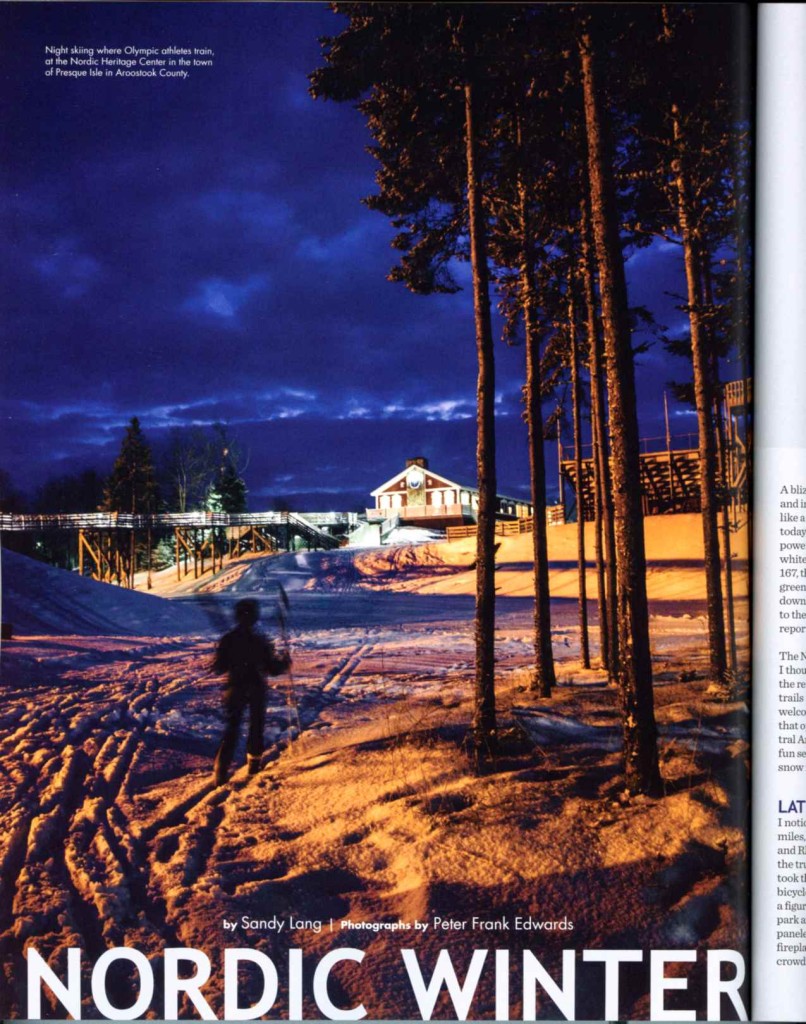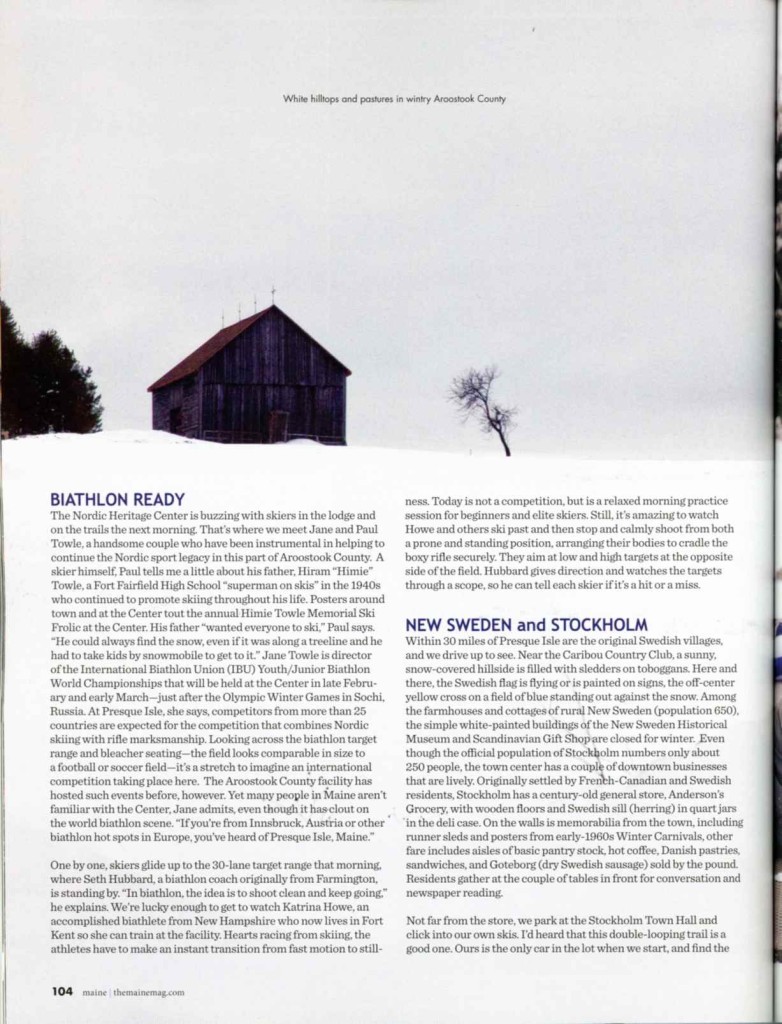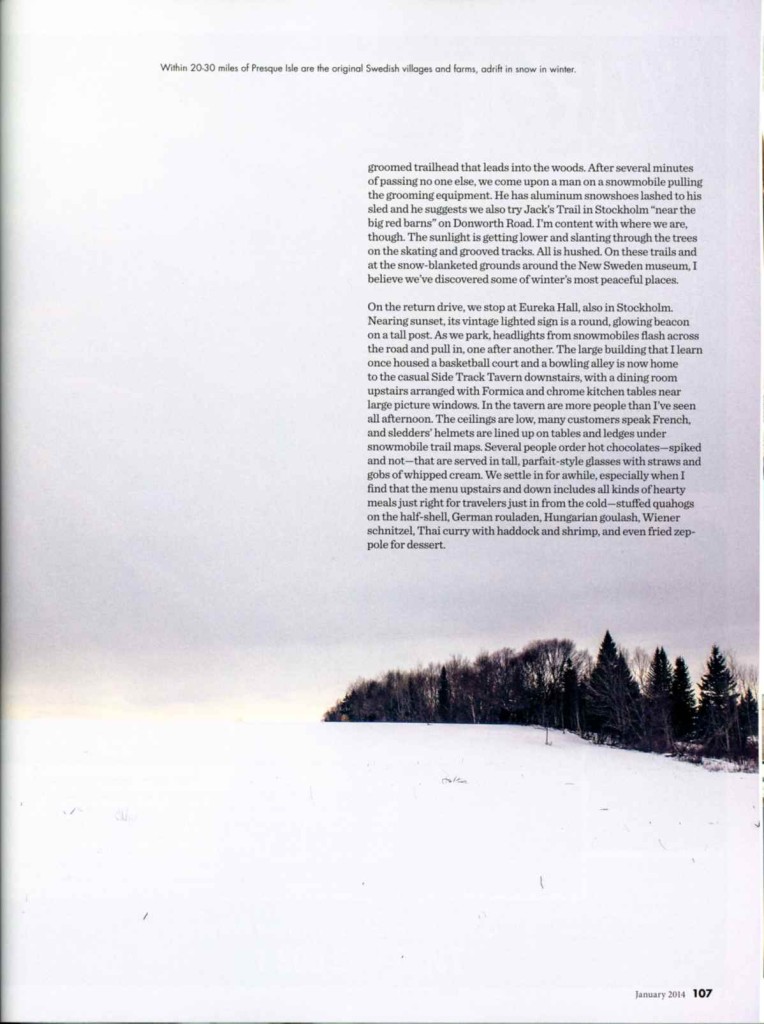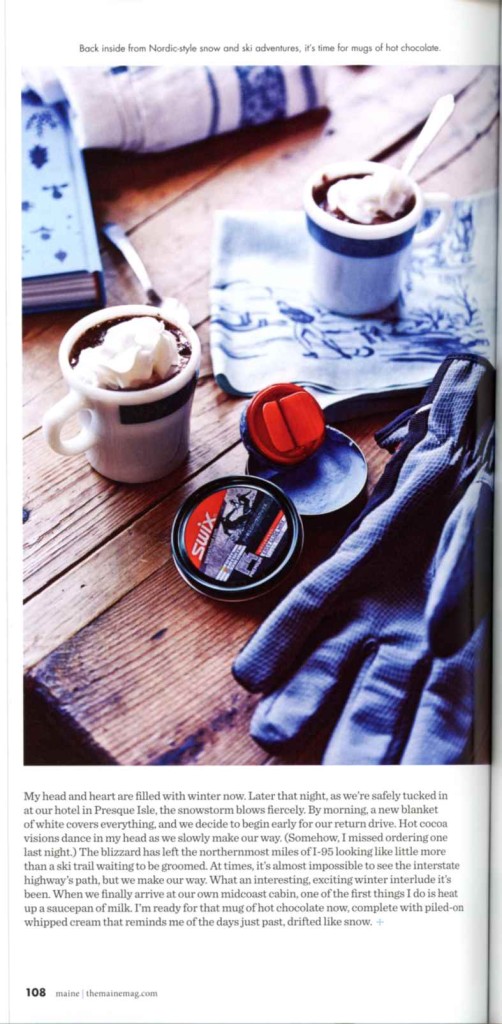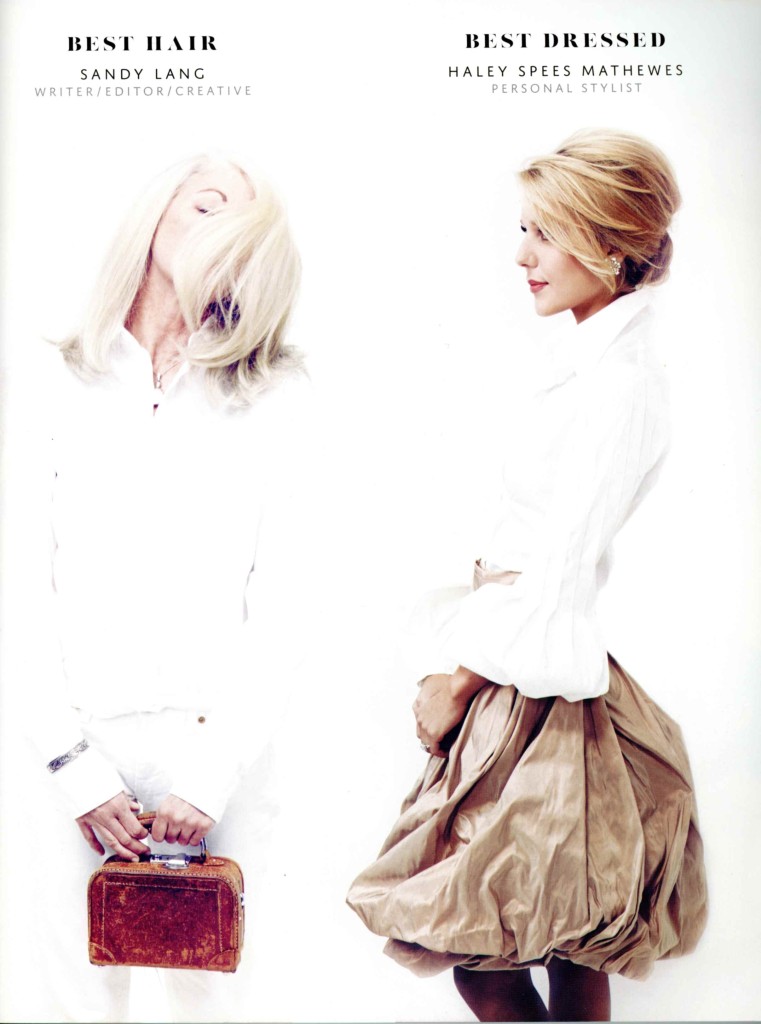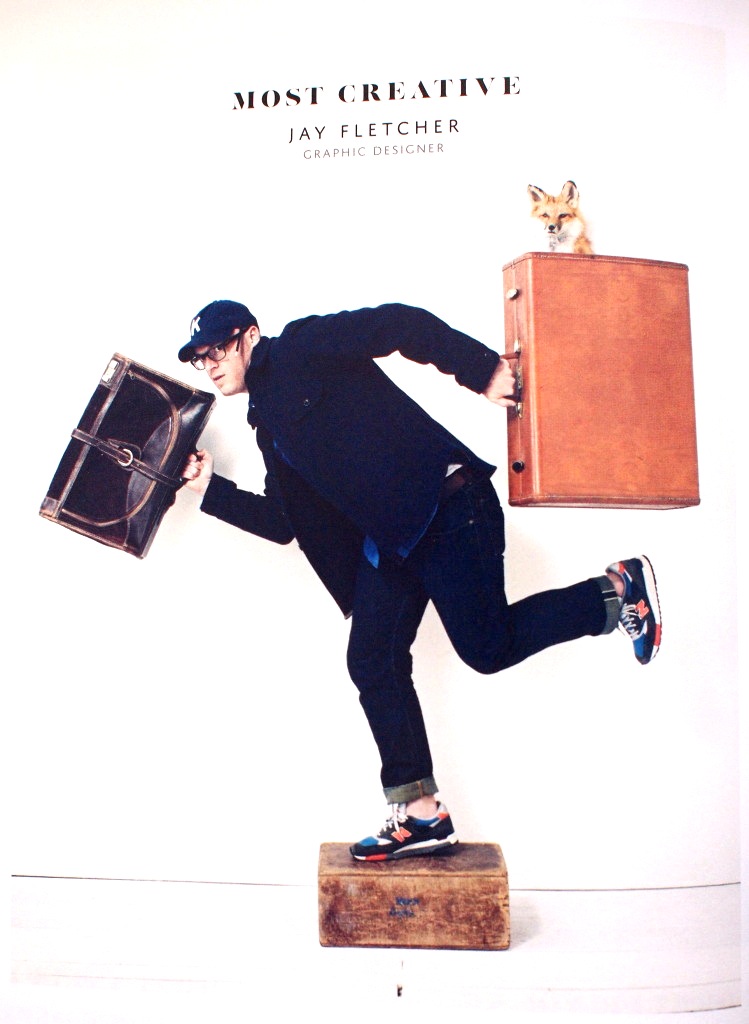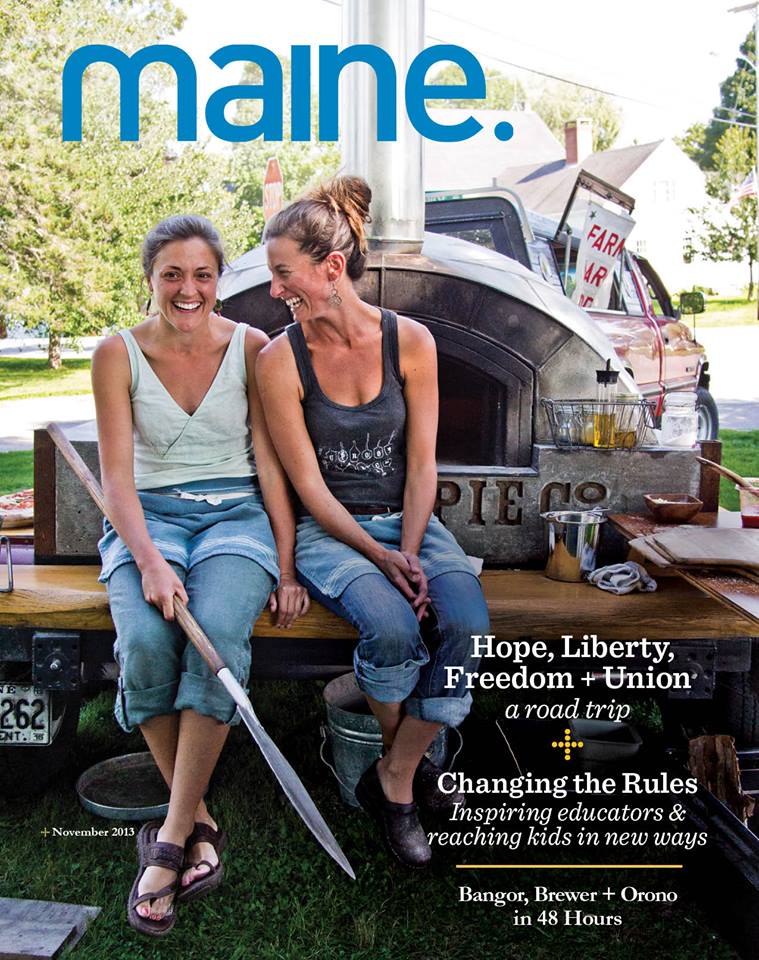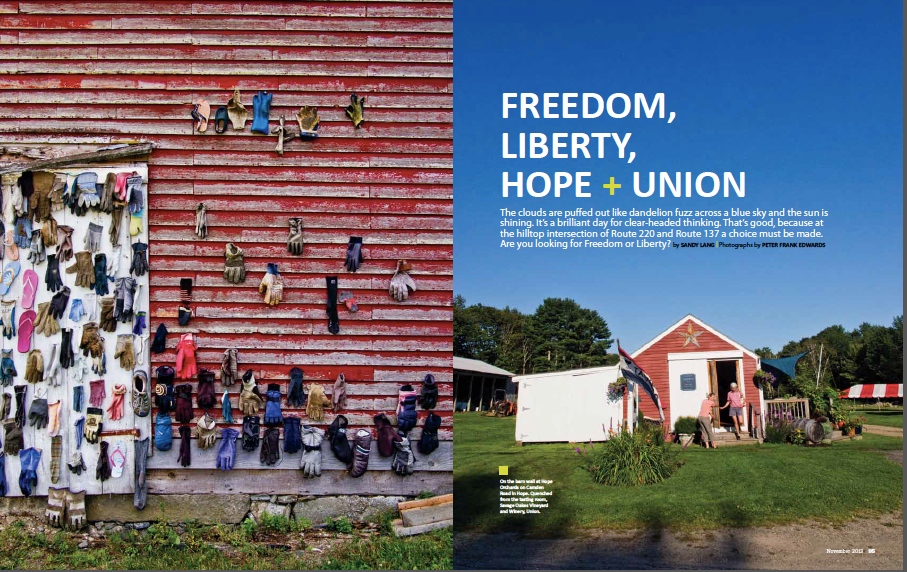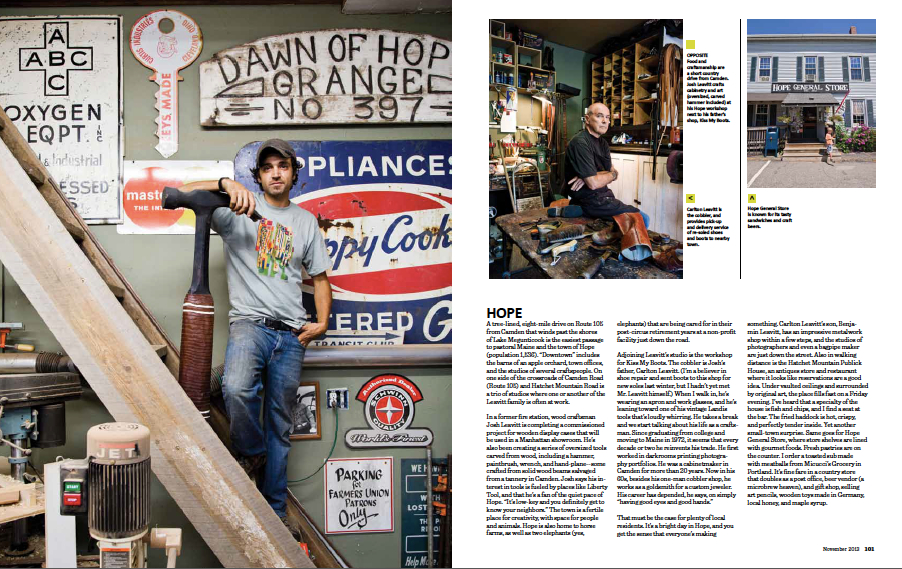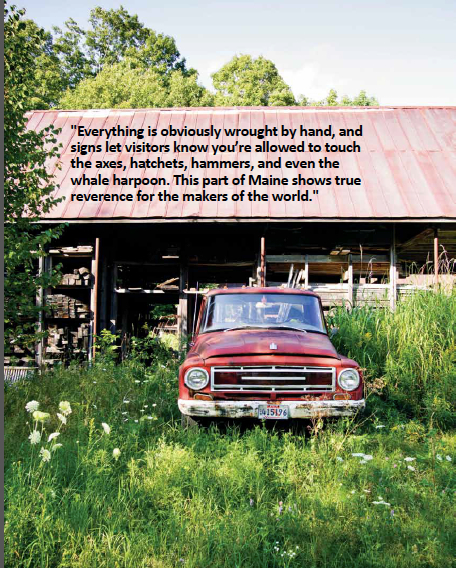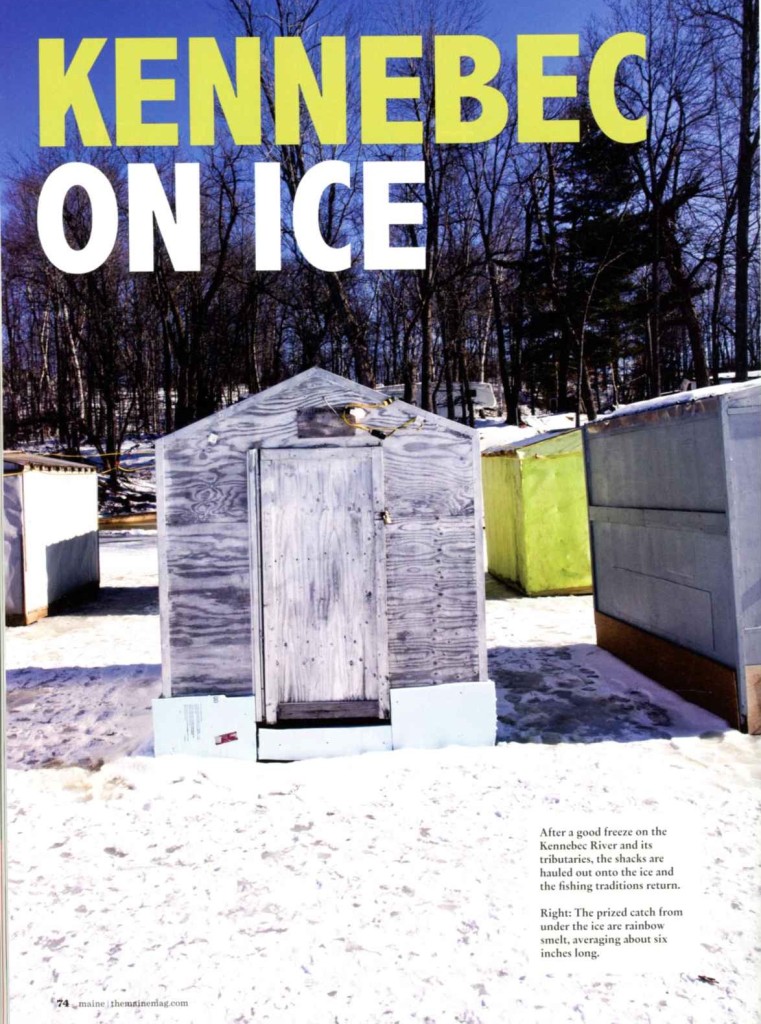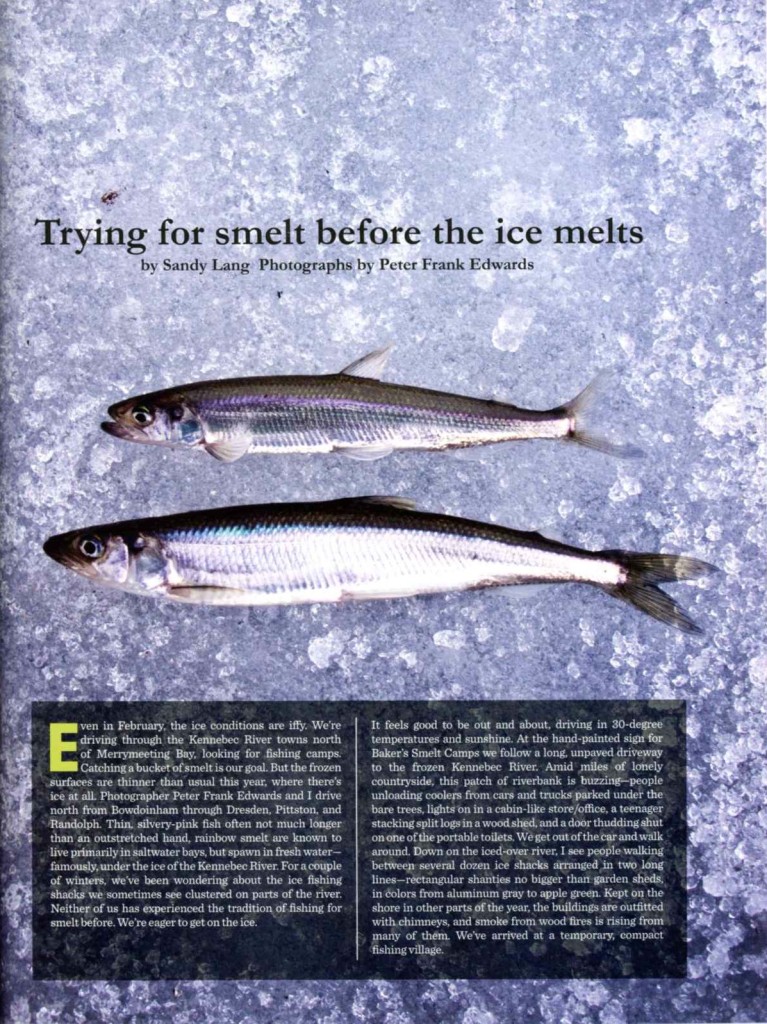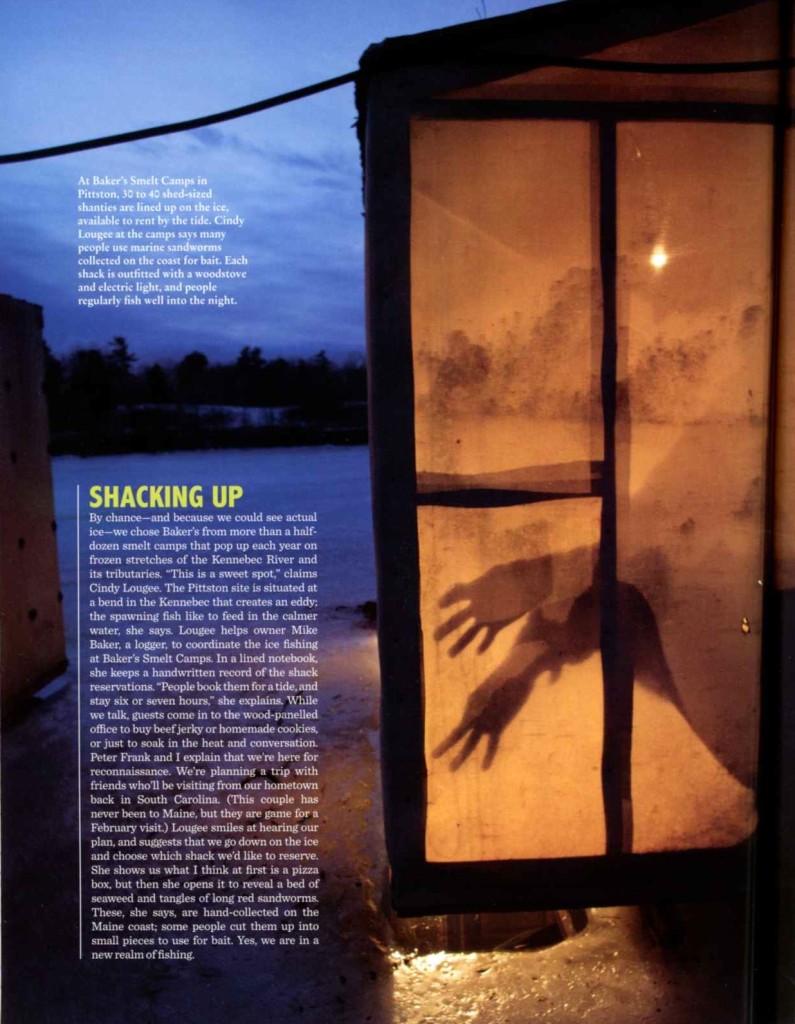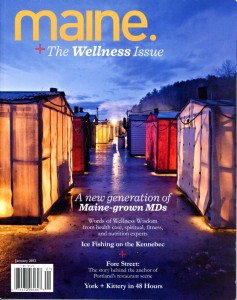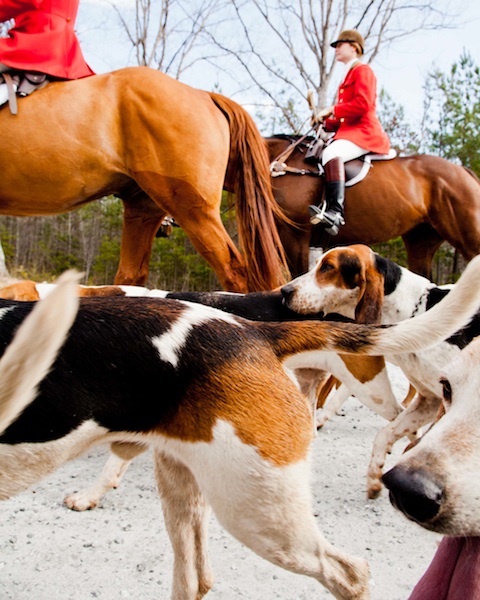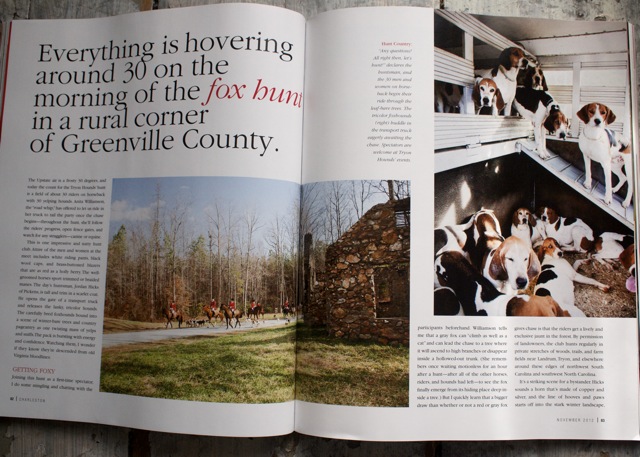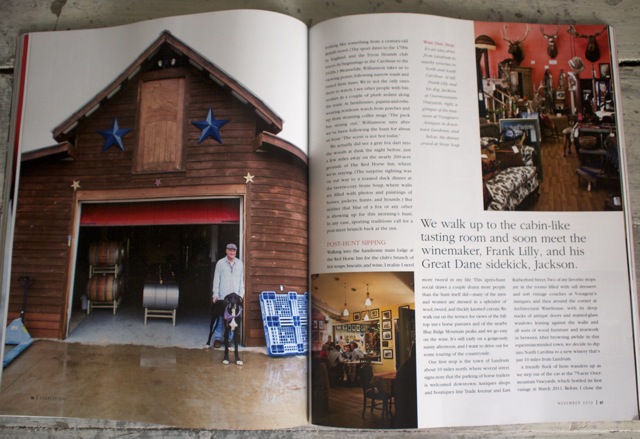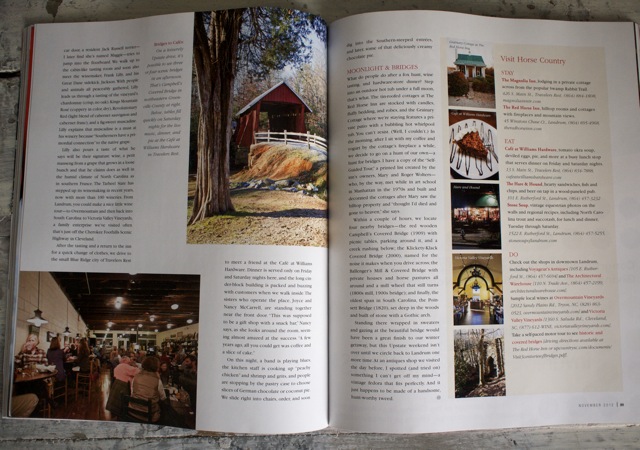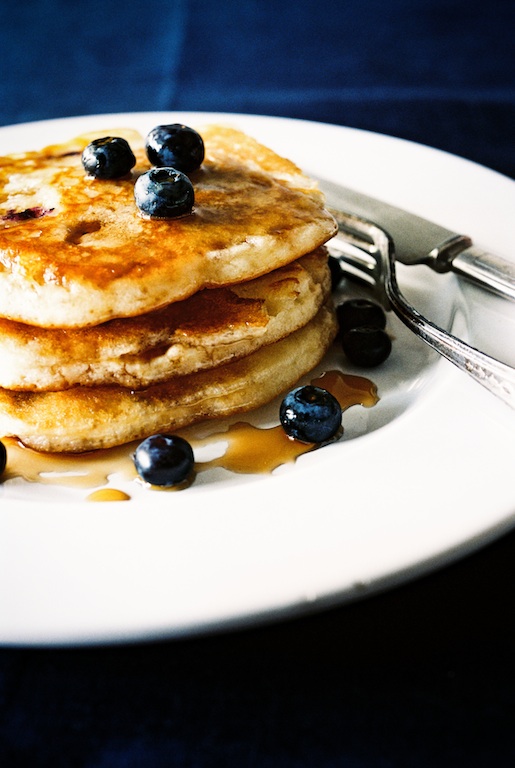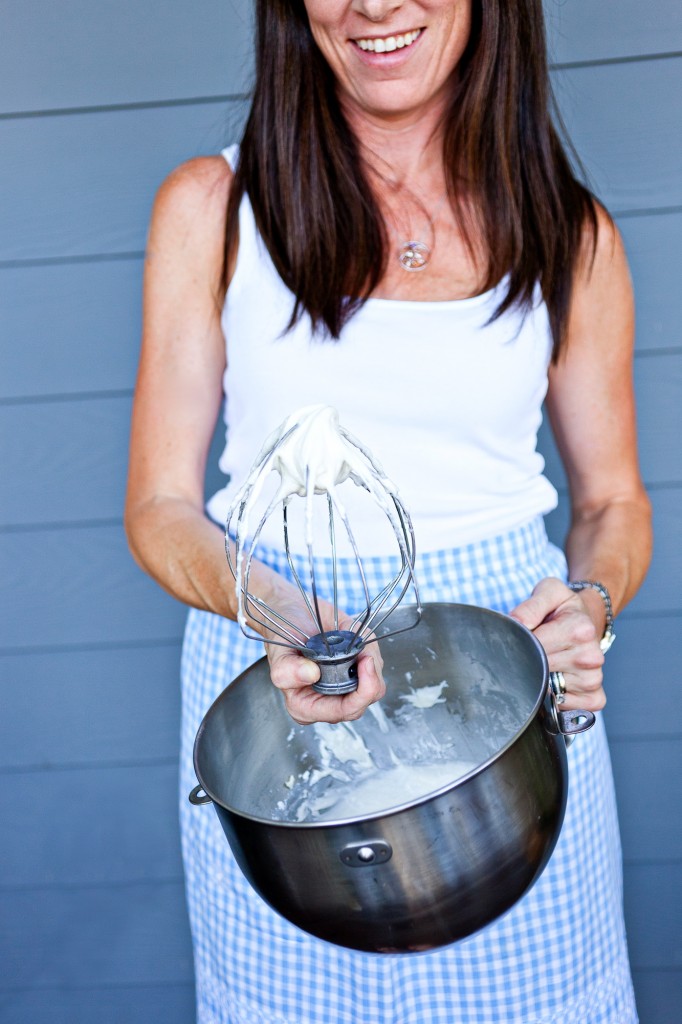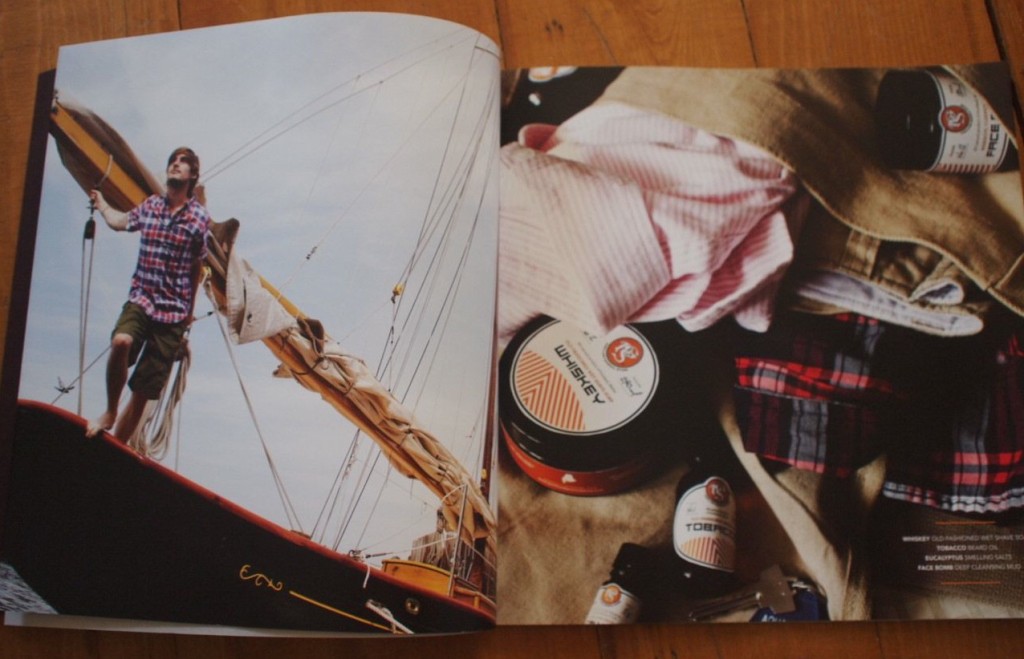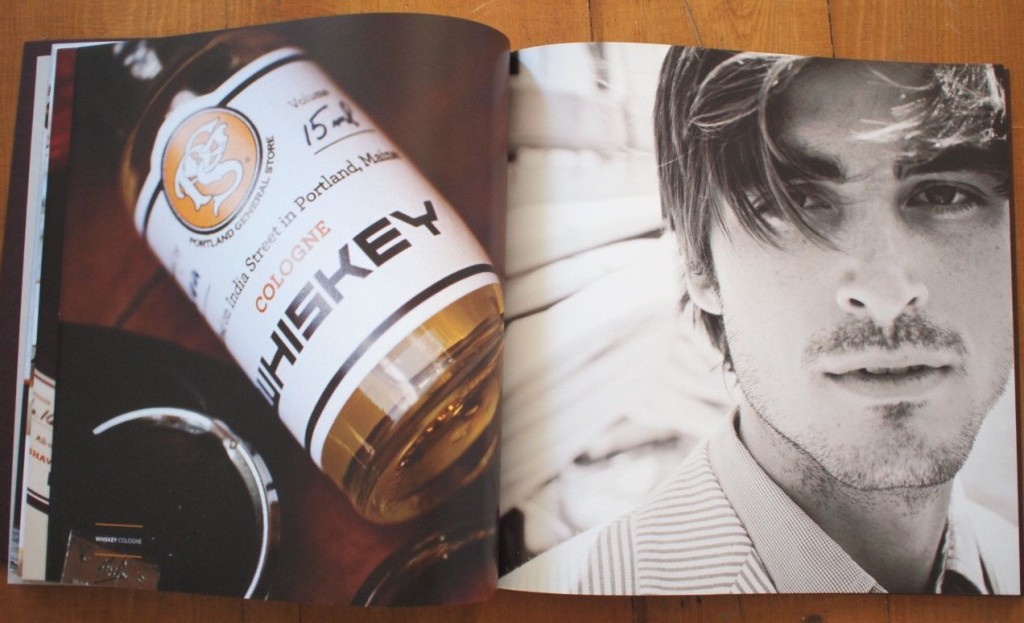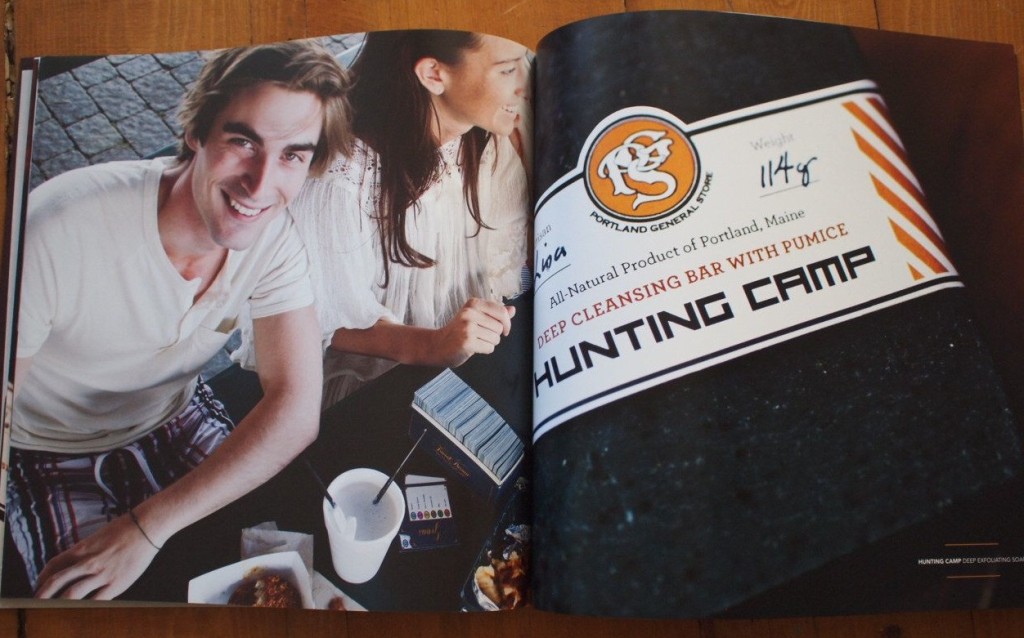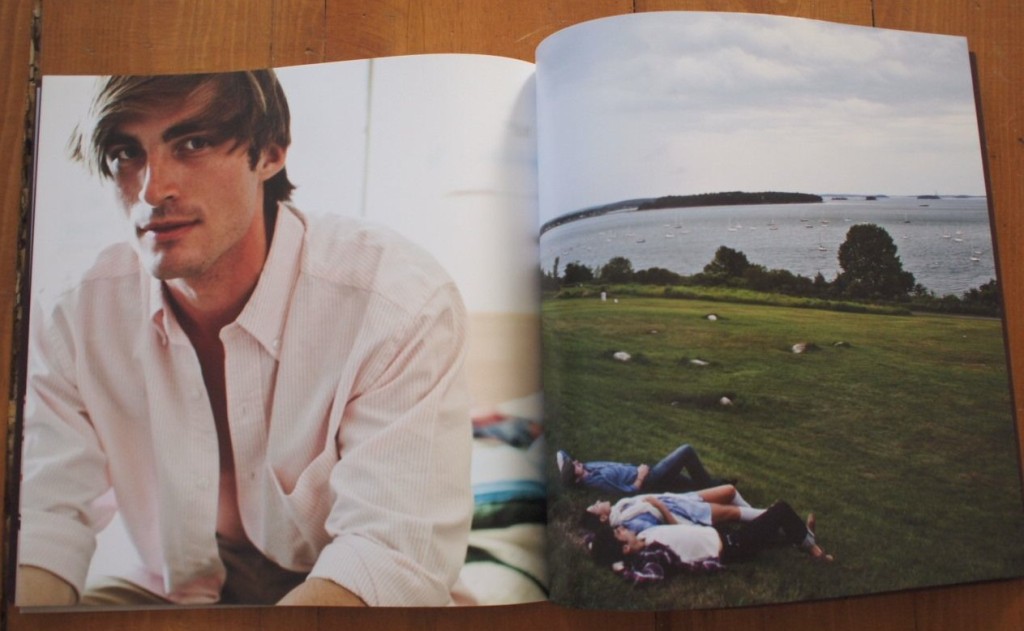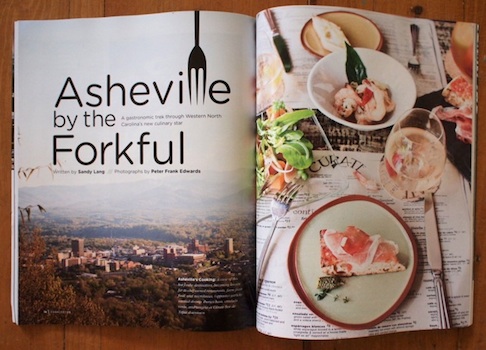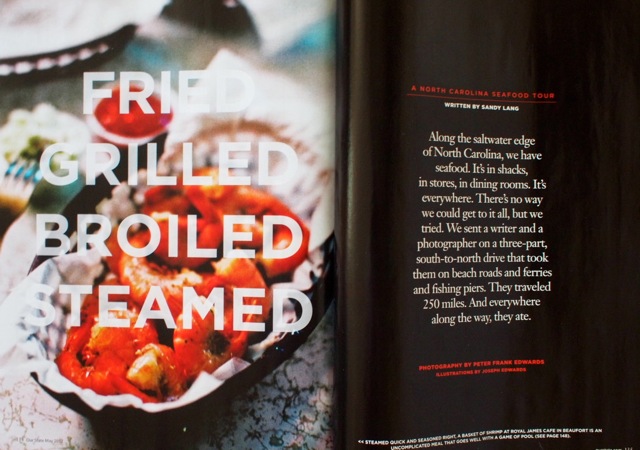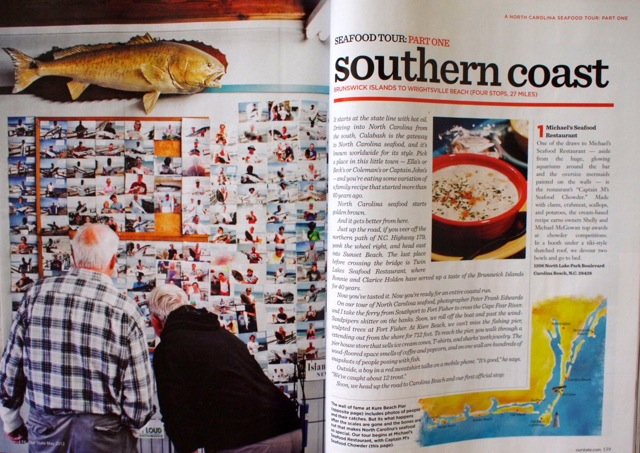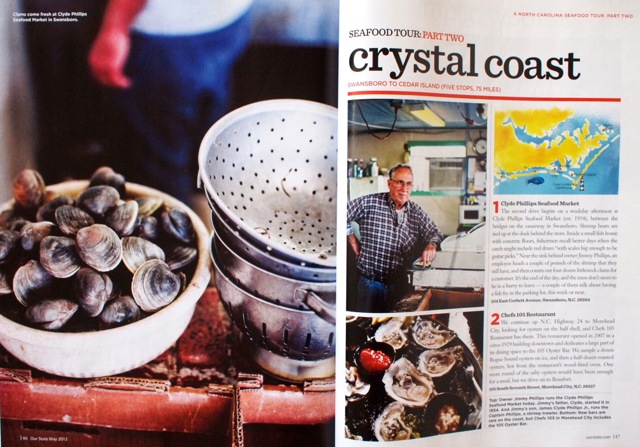Great to see some excerpts from “NORDIC WINTER,” our latest feature for Maine magazine… love the serene images and layout.
This part of vast Aroostook County can quickly turn into a winter wonderland—especially at a Swedish-style lodge and trails situated more northerly than Montreal, and practically due east of Quebec City.
A blizzard hit last weekend and another is on its way. It’s mid-winter, and in a four-wheel-drive wagon we’ve made it to what looks to me like a mythical Norland—the great white North. In Aroostook County today, the landscape is the stuff of snowy dreams. Except where powerful trucks are pushing angled plows across roadways, a froth of white stretches across the rural scenery, barely disturbed. On Route 167, the color palette includes a cool white edged in blues, the deep green of spruce pine, and every shade of gray. Huge flakes are blowing down on Presque Isle, and we soon turn onto a white-blanketed lane to the cross-country ski destination I’ve read about in winter news reports of Olympic-level athletes in training.
LATITUDE 46 NORTH
I notice some things right away up in “The County.” (At 6,453 square miles, Aroostook spans an area greater than the size of Connecticut and Rhode Island, combined.) Here, inside and on top of many of the trucks and cars are snowshoes and skis—particularly since we took the exit from I-95 toward Presque Isle. Instead of a graphic of a bicycle, the yellow, diamond-shaped “share the road” signs here show a figure on skate skis. Winter sports definitely dominate. When we park at the Nordic Heritage Center and start exploring, the wood-paneled sauna is plenty hot downstairs, and upstairs, the large stone fireplace is stacked with wood and crackling with fire. An after-work crowd is gathering, hanging up their parkas and saying hello to each other—singles, couples, families. The flurries have started and stopped most of the afternoon.
Built on a hill, the Nordic Heritage Center is structurally impressive. The architecture of the red, wooden lodge building and waxing sheds nods to the influence of Swedish immigrants who settled in nearby New Sweden and Stockholm. Old photographs, long wooden skis, and news clippings at the Center help tell the story, which begins in the 1870s when 21 families from Sweden were enticed to live in the northern reaches of Maine by officials sent by then-governor Joshua Chamberlain. The hardy immigrants are credited with bringing along Swedish traditions of food and culture, and for being the first to introduce Nordic skiing to America.
NEW SWEDEN and STOCKHOLM
Near the Caribou Country Club, a sunny, snow-covered hillside is filled with sledders on toboggans. Here and there, the Swedish flag is flying or is painted on signs, the off-center yellow cross on a field of blue standing out against the snow. Among the farmhouses and cottages of rural New Sweden (population 650), the simple white-painted buildings of the New Sweden Historical Museum and Scandinavian Gift Shop are closed for winter. Even though the official population of Stockholm numbers only about 250 people, the town center has a couple of downtown businesses that are lively. Originally settled by French-Canadian and Swedish residents, Stockholm has a century-old general store, Anderson’s Grocery, with wooden floors and Swedish sill (herring) in quart jars in the deli case. On the walls is memorabilia from the town, including runner sleds and posters from early-1960s Winter Carnivals, other fare includes aisles of basic pantry stock, hot coffee, Danish pastries, sandwiches, and Goteborg (dry Swedish sausage) sold by the pound. Residents gather at the couple of tables in front for conversation and newspaper reading.
Not far from the store, we park at the Stockholm Town Hall and click into our own skis. I’d heard that this double-looping trail is a good one. Ours is the only car in the lot when we start, and find the groomed trailhead that leads into the woods. After several minutes of passing no one else, we come upon a man on a snowmobile pulling the grooming equipment. He has aluminum snowshoes lashed to his sled and he suggests we also try Jack’s Trail in Stockholm “near the big red barns” on Donworth Road. I’m content with where we are, though. The sunlight is getting lower and slanting through the trees on the skating and grooved tracks. All is hushed. On these trails and at the snow-blanketed grounds around the New Sweden museum, I believe we’ve discovered some of winter’s most peaceful places.
On the return drive, we stop at Eureka Hall, also in Stockholm. Nearing sunset, its vintage lighted sign is a round, glowing beacon on a tall post. As we park, headlights from snowmobiles flash across the road and pull in, one after another. The large building that I learn once housed a basketball court and a bowling alley is now home to the casual Side Track Tavern downstairs, with a dining room upstairs arranged with Formica and chrome kitchen tables near large picture windows. In the tavern are more people than I’ve seen all afternoon. The ceilings are low, many customers speak French, and sledders’ helmets are lined up on tables and ledges under snowmobile trail maps. Several people order hot chocolates—spiked and not—that are served in tall, parfait-style glasses with straws and gobs of whipped cream. We settle in for awhile, especially when I find that the menu upstairs and down includes all kinds of hearty meals just right for travelers just in from the cold—stuffed quahogs on the half-shell, German rouladen, Hungarian goulash, Wiener schnitzel, Thai curry with haddock and shrimp, and even fried zeppole for dessert.
My head and heart are filled with winter now. Later that night, as we’re safely tucked in at our hotel in Presque Isle, the snowstorm blows fiercely. By morning, a new blanket of white covers everything, and we decide to begin early for our return drive. Hot cocoa visions dance in my head as we slowly make our way. (Somehow, I missed ordering one last night.) The blizzard has left the northernmost miles of I-95 looking like little more than a ski trail waiting to be groomed. At times, it’s almost impossible to see the interstate highway’s path, but we make our way. What an interesting, exciting winter interlude it’s been. When we finally arrive at our own midcoast cabin, one of the first things I do is heat up a saucepan of milk. I’m ready for that mug of hot chocolate now, complete with piled-on whipped cream that reminds me of the days just past, drifted like snow.
– Sandy Lang for Maine, January 2014 (photographs by Peter Frank Edwards)
